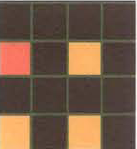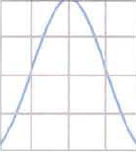Chapter 5. Transformations and Keyframing
"Being able to look at an image and quickly know what's wrong with it and how to fix it is very important. The strongest suit of a senior compositor is that bag of tricks that they develop over the years."

Transformations encompass translation, rotation, scale, and skew. Each transformation has an unique effect on an output or layer, which necessitates the application for transformation matrices and convolution filters. Keyframing, on the other hand, is necessary for transformations that change over time. After Effects and Nuke provide various means to set keyframes and manipulate the resulting channel curves. Each program offers its own version of a curve editor. So you can practice these concepts, this chapter includes After Effects and Nuke tutorials that let you animate and thereby give life to a static render.

Understanding Transformations
Transformations are an inescapable part of compositing. As such, translation and rotation operations necessitate the remapping of a pixel from an old position to a new position. Scaling operations, on the other hand, require a decrease or increase in the total number of pixels within an image. Transformations involve two ...
Get Professional Digital Compositing: Essential Tools and Techniques now with the O’Reilly learning platform.
O’Reilly members experience books, live events, courses curated by job role, and more from O’Reilly and nearly 200 top publishers.

